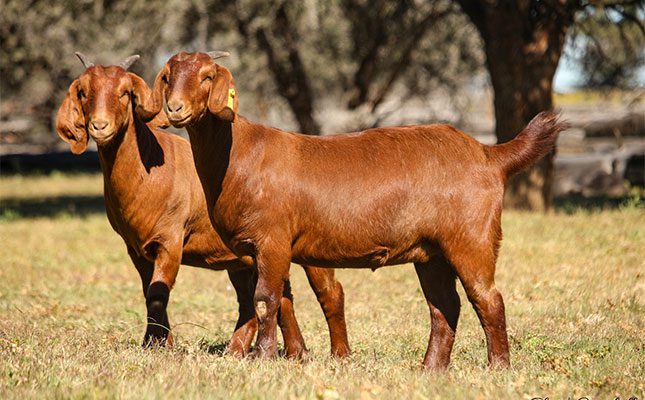South African meat goat breeds are making their mark on the global stage, offering superior performance and meat quality compared to many of their international counterparts. According to Chantelle Smit, secretary of the SA Boer Goat Breeders’ Association, breeds like the Boer, Savanna, and Kalahari Red are prized for their exceptional traits — from rapid growth and high carcass yields to outstanding adaptability in harsh environments.
Built for Meat and Efficiency
“These breeds are intensively selected for traits like muscle development, disease resistance, and heat tolerance,” says Smit. “The Kalahari Red and Savanna in particular are known for thriving in tough, arid conditions with minimal input while still delivering high outputs.”
While goats in Europe are mostly bred for milk production, and many Asian and African breeds are more multipurpose, South African meat goats stand out for their single-purpose focus: top-quality meat.
South African goats tend to grow faster, produce heavier carcasses, and yield tender, lean, flavourful meat — qualities that are in high demand both domestically and abroad.
A Breed Apart
The Boer goat, widely regarded as the global gold standard for meat goats, is large-framed with a high carcass yield, moderate fat cover, and consistently excellent meat quality. It’s also the most widely exported South African breed, often used to improve meat traits through crossbreeding around the world.
The Savanna, another standout, offers lean, tender meat, a high carcass yield, and low fat cover — all with minimal management requirements. Similarly, the Kalahari Red delivers fine-textured, flavourful meat, strong fertility, and the ability to thrive in semi-desert grazing systems.
By contrast, international breeds like the Jamnapari from India have a medium carcass yield and inconsistent meat quality, while the West African Dwarf goat, though hardy, is small-framed and produces lean but tough meat with a much lower yield.
Adapted to the Land — and Beyond
South African meat goats are also exceptional browsers, making them valuable not just for meat, but also for controlling bush encroachment and invasive weeds. This ecological benefit, combined with their resilience in extensive grazing systems, sets them apart from breeds raised in more intensive setups.
Smit notes that while European breeds thrive in cooler, controlled environments and are often confined to dairy sheds, South African goats have demonstrated their ability to adapt globally — whether in the dry Middle East or the grasslands of South America.
Global Demand, Growing Recognition
South African breeds, particularly the Boer, Savanna, and Kalahari Red, are increasingly in demand for improving local herds in other regions. Their reputation for low input and high output makes them especially attractive for commercial meat production systems.
“As global interest in sustainable, high-quality meat continues to grow,” says Smit, “South African goats are leading the way — not only in performance, but in setting the standard for what a meat goat should be.”



